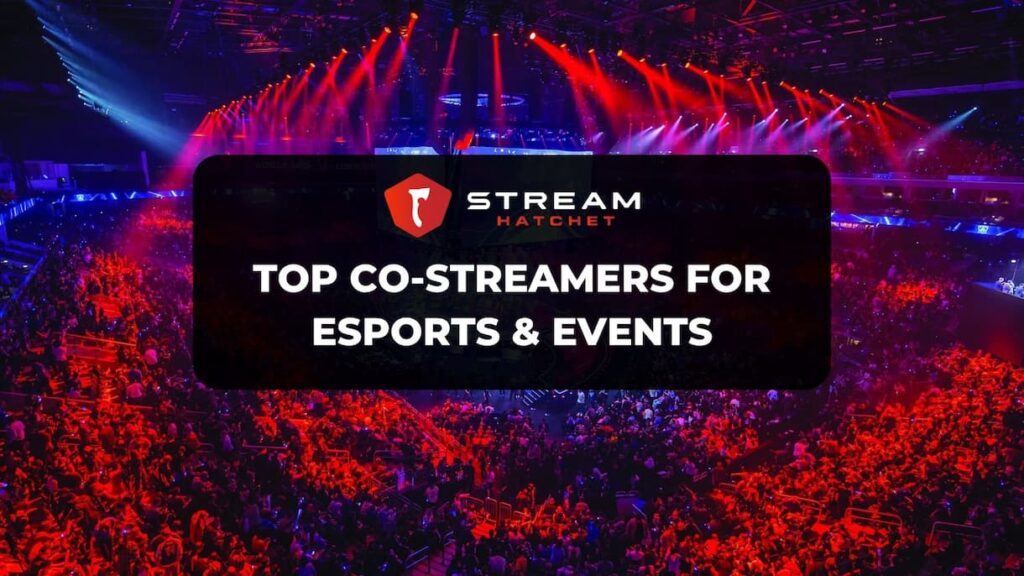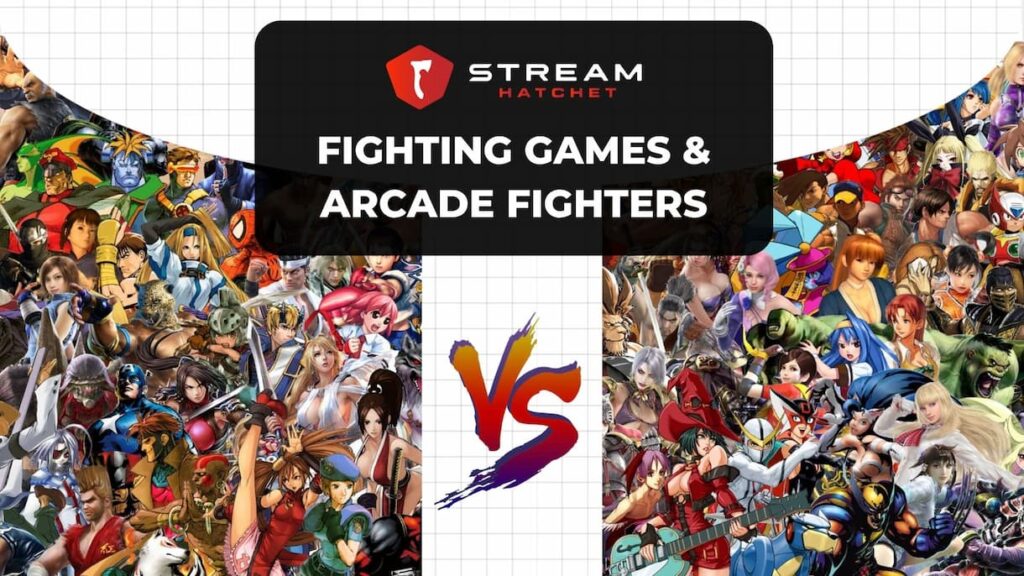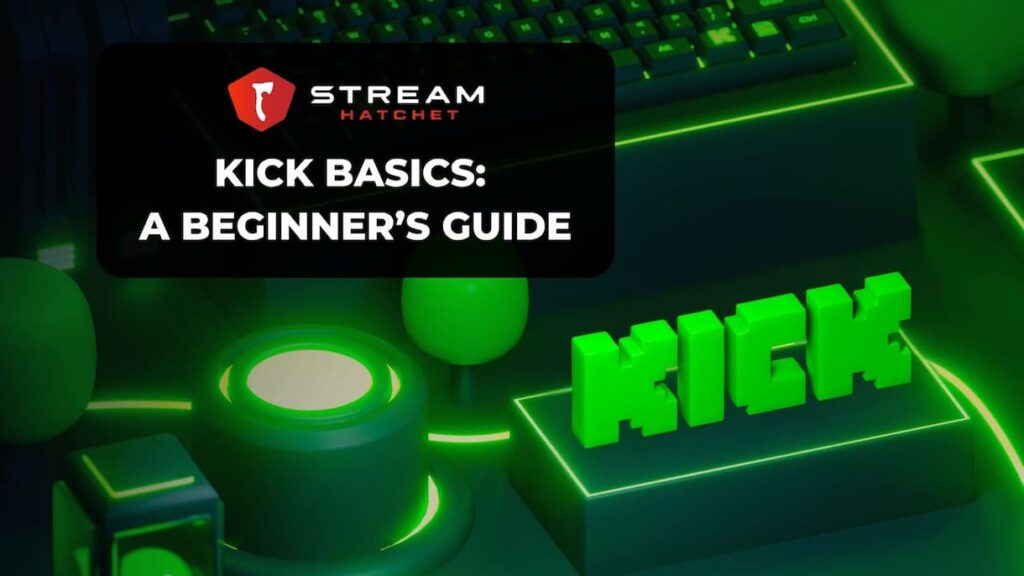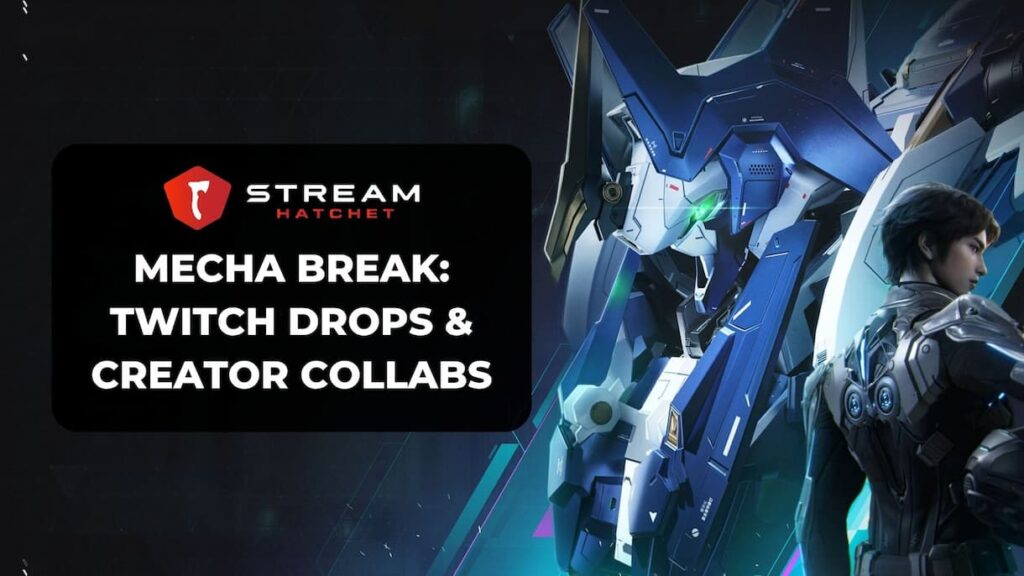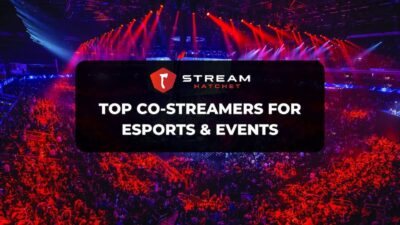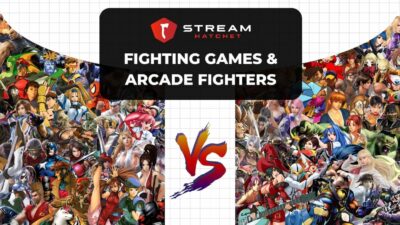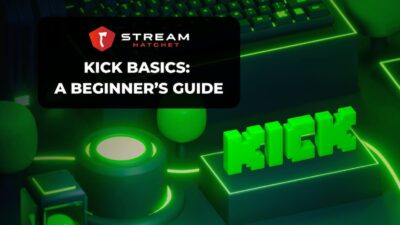For new entrants to the live-streaming arena, the sheer mass of information can be overwhelming. Platforms, streamers, gaming titles, variety content – with so many interesting trends emerging, evolving, and fading at the lightspeed rate of online discourse, it can be hard to separate what’s important. To help you demystify this industry, we’re covering the basics of the most popular live-streaming platform: Twitch.
What is Twitch exactly? Twitch is a video live-streaming platform that focuses on video game content, but Twitch streamers produce a wide variety of content from vlogs to music to talk shows to artwork. The Twitch audience is composed of gamers, travelers, esports fans, musicians, and creatives – a diverse online community that acts as its own social media site. Through their bonds with Twitch streamers, viewers decide what games they should play, what places they should visit, and what hobbies they should adopt.
As such, advertising your product on Twitch is a fantastic way of reaching a mass, devoted audience. Understanding the platform means understanding how best to reach that audience.
Five Crucial Points to Understand About Twitch:
- Twitch’s Founding and Evolution
- Twitch’s Business Model
- Twitch’s Relationship with Streamers
- Twitch-specific Campaigns and Promotions
- The Current State of Twitch
One of the most powerful tools at your disposal is information: Access Stream Hatchet’s in-depth repository of streaming data to see chat mentions on Twitch and current trends among popular streamers.
How Twitch Was Founded and its Evolution
Twitch’s origins date back to 2007 with a small start-up called Justin.tv – a 24/7 broadcast of the founder, Justin Kan, living his ordinary life as a reality show-style experiment. Within a year, Justin.tv had expanded to allow other people the same ability to stream their lives online with 1M registered users joining the site. Although IRL content had been the project’s origin, gaming soon dominated the platform. Kan, along with his collaborators Emmett Shear, Michael Seibel, and Kyle Vogt, saw promise in gaming content and decided to create a spin-off site. On the 6th of June 2011, Twitch was launched.
Twitch streaming became a haven for online games such as Counter-Strike, World of Warcraft, and Dota. Seminal viral events captured the internet’s attention such as Twitch Plays Pokémon, further growing the platform and driving it to become the fourth-largest source of peak internet traffic in the U.S. by 2014. A bidding war for the burgeoning platform broke out in Silicon Valley, with bids from Google, Yahoo, and Amazon. It was Amazon that would eventually buy Twitch, paying $970M USD for the site and capitalizing on the twin booming industries of live streaming and gaming. With capital from a large tech company, Twitch expanded into different content strands, making partnerships with major esports organizations and traditional sponsors.
With great success came great scrutiny, however. Twitch has been rocked by many controversies over the years, such as streamers posting illegal or unsafe content, concerns over Twitch’s contribution to youth gambling addiction, and waves of user dissatisfaction regarding revenue sharing. Despite it all, Twitch weathered the storm under the helm of CEO and co-founder Emmett Shear. When Shear announced he would be stepping down as CEO and handing over the reins to computer scientist Dan Clancy in March of 2023, Twitch’s 12-year era of stability seemed to be at an end.
But the service Shear, Kan, and the other creators who founded Twitch have formed feels too big to fail now. Below, we’ll cover the current state of Twitch in 2024. But first, let’s examine the inner workings of the platform these pioneers created and nurtured over the last 13 years.
Twitch’s Business Model
Registering to use Twitch is completely free and always has been, with the platform being founded on the principle that anyone with the hardware to run Twitch should be able to stream on it. But that raises an obvious question: How does the platform make money?
The primary method of monetization comes from streamers themselves. Streamers are able to generate money by running ads on their streams, and they have full control over ad distribution: Streamers decide how many ads they run, when these ads run, and how long the ads run for. Twitch then splits the revenue with streamers, with the streamer’s portion varying between 50-70% depending on what type of partnership arrangement the streamer has. This split also applies to other revenue streams such as paid subscriptions and “Bits” – a virtual in-platform currency that allows viewers to donate to their favorite streamers as a show of support. How much does a Twitch streamer make then? That depends not just on this revenue split, but also merchandise and sponsorship deals with brands and publishers.
However, Twitch doesn’t rely solely on direct revenue from its streamers. The platform has a number of partners with which it collaborates, offering its stream-hosting services in exchange for exposure and increased web traffic. These include game developers, esports organizations, and unique brand sponsors for advertising campaigns (such as fast food chain Wendy’s partnering during March Madness back in 2022). Twitch even has its own merchandise, trading on the iconic purple branding by selling hoodies, bags, and hats via its “Loot Cave”. For non-Twitch related purchases, Twitch also leverages its parent company Amazon by providing affiliate links for shopping on Amazon.com.

By far the most lucrative collaborators for Twitch are esports organizations. Twitch is home to many of the official channels for major esports tournaments, and it is the go-to platform for co-streamers of these events as well. Understanding how to partner with Twitch and/or ideal co-streamers can make or break an event.
If you’re an esports event organizer, Stream Hatchet can help: We can identify the best co-streamers to widen your reach, find sponsors to fund your project, and provide detailed analytics to track your event’s performance.
Chat with a Stream Hatchet Analyst today to get started customizing your streaming event:
Twitch’s Relationship with Streamers
As implied above, streamers are the lifeblood of Twitch’s business. Although streamers rely upon Twitch streaming for exposure, Twitch relies on entertaining, expert streamers in their fields who can attract viewers to the platform to generate revenue. As of 2022, there were 7.6M registered streamers using the platform. Sifting out the noteworthy from the masses requires an understanding of how popularity is measured on Twitch.
Twitch streamers have two primary types of fans: “Followers” and “Subscribers”. Followers are viewers who have opted to receive notifications from a specific channel, which is completely free. Subscribers, on the other hand, require a financial commitment, and in return they receive custom emotes and badges. As a result, streamers often have far more Followers than Subscribers. For example, the most “Followed” streamer of all time is Fortnite player Ninja with over 19M Followers, whereas the most “Subscribed” streamer of all time is IRL and marathon streamer Kai Cenat with over 300K Subscribers.
Both of these counts are important: Followers may be less committed to their streamer than Subscribers, but they’re just as likely to tune in for big events. Subscribers, on the other hand, are more likely to pay for streamer-related merchandise or endorsements. Generous streamers and Subscribers can spread the love by “gifting” a sub to other users. These users get to subscribe to the channel for free for a month, getting a taste of exclusive benefits and, potentially, staying on for longer if they like what they see. On Twitch, what is a gift bomb then? A gift bomb is simply when one subscriber purchases a bunch of gift subs at once and hands them, creating a hyped up moment for the Twitch streamer and their audience.
Read this article for a full explanation of Twitch subs and their implications for advertisers.

Understanding which metrics are most relevant for your use case depends entirely upon your product or event, what content the streamer produces, how often they produce content, and who they produce it for. You can find a simple ranking of the top streamers on Twitch (and other platforms) on the Stream Hatchet website.
Twitch-Specific Campaigns and Promotions
Whether you have a brand you’re marketing or a game you’re promoting, you could of course reach out to a streamer directly and ask if they would be interested in reviewing your product. This might involve giveaways, unboxings, or simple channel sponsorships. But Twitch has far stronger hands-on opportunities to get your brand out there.
The first are the in-person events, such as the aforementioned esports tournaments that Twitch hosts on its platform. Sponsoring esports events if you’re a brand, or creating these events for your game if you’re a developer, can be a fantastic way to tap into the largest online community of gamers out there. Even games that aren’t competitive can hold esports tournaments, such as the surprisingly active world of Farming Simulator esports. Alternatively, Twitch holds its own convention every year, TwitchCon, in which streamers and their fans congregate to celebrate the live-streaming community. Getting your product featured at TwitchCon is a surefire way to reach a passionate, active audience.
Over the years, Twitch has also developed a number of specific campaign types unique to the platform. Earlier we mentioned in passing Twitch Plays Pokémon, just one example of a Twitch Plays event in which the viewers for a stream are given control over a character in the game using their chat entries. This can be a great publicity event for game launches or updates to your games, as seen recently with the Twitch Plays Akuma event for Street Fighter 6.

Alternatively, Twitch Drops campaigns are a popular way to bring your community into one place by offering them free in-game loot in exchange for watching a certain number of hours of participating streamers’ content. Brawl Stars‘ Twitch Drops campaign was a perfect example of this strategy, raising viewership of the game on Twitch by over 600%. These Twitch Drops campaigns can be further targeted by partnering with specific streamers to produce customized skins and badges, as seen with the recent Rust Twitch Drops event.
There are many types of stream marathons on Twitch as well, where streamers provide extended coverage of a particular game or event to make event viewing out of their regular content. The most popular month for marathons and “subathons” is SUBtember – a month-long discounted event for new subscribers. You can read more about SUBtember here.
Whichever campaign or promotional strategy you choose, you’ll need to gauge the success of your strategy with customized, detailed data. Stream Hatchet provides a robust array of services to help you design, execute, and track your Twitch Drops campaigns.
Chat with a Stream Hatchet Analyst today to plan your Twitch campaign:
The Current State of Twitch
What is Twitch now? How does the platform currently stand? With 31M users daily, it can feel that Twitch is almost too big to fail. So many streamers depend on Twitch for their livelihoods.
But, as with any large company, Twitch fights off controversies from within and without. Consumer watchdogs are constantly hounding Twitch over its community guidelines to make sure the platform is safe for children. In particular, Twitch (along with other streaming platforms such as Kick) has always struggled with limiting gambling content on its platform (which critics say can lead to youth gambling) and restricting sexual content. Twitch’s struggle to achieve profitability has also led to backlash from the very creators it hopes to foster, creating a constant push-pull dynamic between the platform and its users.
Twitch has weathered these controversies so far, spreading from its hub in the U.S. around the world. 36% of all Twitch users come from the United States and Canada combined, with Brazil and Germany following in second and third place. Overall, just 16 countries capture 88.7% of all Twitch users globally. Notably, South Korea should no longer be included in this list as Twitch shut down in the region as recently as February of 2024. Regardless, even in regions where Twitch isn’t present, these countries’ respective streaming platforms often follow the template set out by Twitch.

Lastly, it’s worth looking at which content is popular on Twitch as of the time of writing. Looking at single categories alone, non-gaming is surprisingly the most popular with 13.9% of all hours watched on Twitch over the last 12 months. However, this ignores the fact that the gaming genres taken together far outweigh this number.
Among gaming, the top two genres represent two different strands of Twitch viewers. First-Person Shooters make up 13.4% of all viewership, led by major esports titles like Rainbow Six Siege and VALORANT with hardcore gamer fans. Meanwhile, Action-Adventure titles like Elden Ring and Cyberpunk 2077 represent 11.6% of all viewership as constituted by the legions of single-player game fans. Understanding which games appeal to which sub-communities of the Twitch user base is the key to targeting marketing appropriately.
This is far from every detail one should know about Twitch, but the information provided herein is a fantastic starting point for anyone looking to do deeper reading into the topic. Before beginning your first foray into advertising on Twitch, we strongly suggest doing further reading on Twitch’s official blog and, of course, playing around with the site yourself. Of course, it can help to have a guiding hand when entering the live-streaming arena. For personalized advice, reach out to us at Stream Hatchet.
Stream Hatchet provides the data needed to navigate the Twitch landscape:
- Learn which streamers are playing which games to better target your campaigns
- Gain insights into your viewership data to better negotiate with streamers and sponsors
- Explore the effectiveness of your social media campaigns to better understand what marketing strategies are reaching your audience
- Track the performance of esports events and gain insight into the audience demographics for specific tournaments
To get the edge in the streaming arena, sign up to Stream Hatchet now and a sales representative will be in touch to design your personalized demo:


